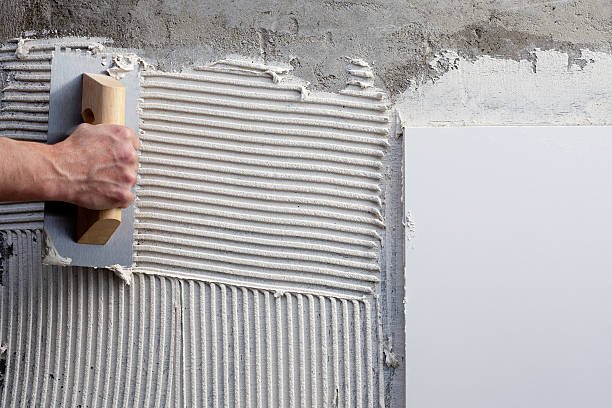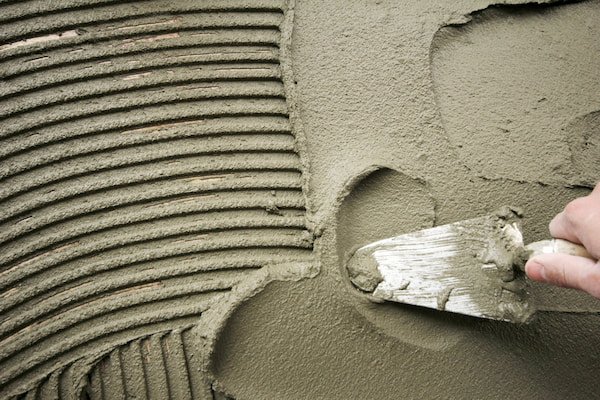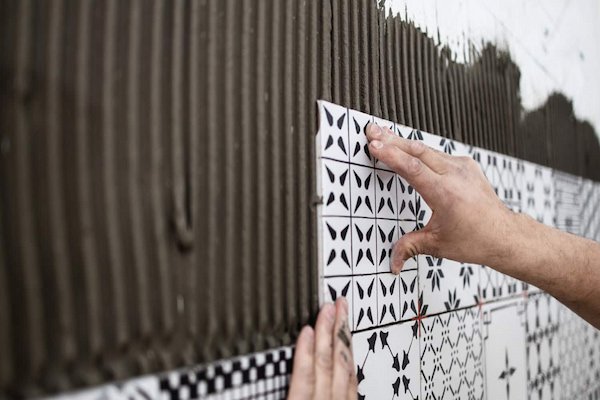
When you mix tile adhesive, you expect it to be smooth, easy to apply, and able to hold the tile firmly in place—especially on walls or when working with large tiles. But have you ever wondered what makes the adhesive stay in place without sliding down? The key ingredient behind this performance is HPMC (Hydroxypropyl Methyl Cellulose).
HPMC may sound technical, but in simple terms, it is a special additive that controls the thickness, water retention, and stickiness of tile adhesive. Think of it as the “secret helper” that makes tile adhesive easier to work with and ensures strong bonding.
In this blog, we’ll explain HPMC for tile adhesive simply and practically, so you can understand how it affects your tile adhesive—and why choosing the right HPMC is essential for your project.
What Is HPMC and Why Is It Used in Tile Adhesive?
Tile adhesive is not just sand and cement. It needs to spread smoothly, hold tiles in position, and develop strong bonding strength. HPMC is added to improve these properties. It works like a thickener, water keeper, and performance booster—all in one.
Without HPMC, tile adhesive would:
- Dry too quickly
- Become too watery or too stiff
- Allow tiles to slide down walls
- Lose strength due to poor hydration
With the right amount of HPMC, tile adhesive becomes easier to apply and performs much more reliably.

How HPMC Changes the Consistency of Tile Adhesive
Think about making dough: too much water makes it runny, too much flour makes it too hard to knead. Tile adhesive works the same way.
HPMC helps achieve the perfect consistency by:
- Absorbing water and holding it inside the adhesive
- Forming a smooth, gel-like structure that keeps everything evenly mixed
- Thickening the adhesive so it doesn’t drip or slide
In simple terms, HPMC helps the adhesive stay where you put it and keeps it workable for a longer time.
Why the Right Consistency Matters
The consistency of tile adhesive directly affects construction quality:
| Consistency Condition | What Happens | Result |
|---|---|---|
| Too thin (not enough HPMC) | Adhesive runs off the wall, tiles slip | Difficult to install, poor bonding |
| Too thick (too much HPMC) | Hard to spread, doesn’t stick well | Incomplete contact, air gaps and hollow tiles |
| Just right | Smooth to apply, tiles stay in place | Strong bonding, fast and easy installation |
The ideal consistency ensures:
- Easy spreading with a trowel
- Clear and stable grooves
- No sagging or slipping of tiles
- Better contact between the adhesive and tile

How HPMC Dosage Affects Tile Adhesive Performance
The performance of HPMC depends on how much is added. Here’s a simple comparison:
1. Too Little HPMC (<0.3%)
- Adhesive is too watery
- Tiles slide down when applied on walls
- Poor water retention causes weak bonding
2. Appropriate Amount (0.3%–0.6%)
- Perfect consistency
- Good workability and open time
- Tiles stay firmly where placed
- Suitable for most wall and floor tiles
3. Too Much HPMC (>0.6%)
- Adhesive becomes too thick and hard to spread
- Increases mixing time
- May slow down setting and reduce final strength
Conclusion: The right amount of HPMC depends on tile size, surface type, and installation conditions.
How HPMC Works in Different Construction Projects
1. For Wall Tiles
- Adhesive needs higher thickness to prevent sliding
- Medium-to-high HPMC is recommended
2. For Floor Tiles
- Adhesive can be slightly thinner for easier spreading
- Moderate HPMC amount is ideal
3. For Large or Heavy Tiles
- Requires stronger holding power
- Higher viscosity HPMC provides better support
4. For Hot Weather
- Tile adhesive may dry too fast
HPMC helps retain water longer, ensuring proper bonding

Key Benefits of Using High-Quality HPMC in Tile Adhesive
- Better Workability
HPMC makes the adhesive smooth and easy to spread. You don’t need to apply excessive force, saving time and energy.
- Anti-Slip Performance
When tiling walls, you need the tile to stay exactly where you place it. HPMC increases the internal strength of the adhesive, keeping tiles from moving.
- Longer Open Time
HPMC slows down water evaporation. This allows workers more time to adjust tiles without losing adhesion.
- Improved Bonding Strength
By keeping water in the mixture, HPMC ensures the cement fully reacts, resulting in stronger adhesion and longer-lasting tiles.
- Cost Efficiency
With proper HPMC, less adhesive is wasted and fewer tiles need reinstallation. It ensures consistent quality and reduces callbacks.
Choosing the Right HPMC for Tile Adhesive
If you're producing or selecting tile adhesive, matching HPMC type to application is important:
| Situation | Recommended HPMC Viscosity | Dosage Range |
|---|---|---|
| Small tiles / basic interior use | Low viscosity | 0.3% – 0.4% |
| Standard wall & floor tiles | Medium viscosity | 0.4% – 0.5% |
| Large or heavy tiles / vertical surface | High viscosity | 0.5% – 0.6% |
Conclusion: HPMC is the Key to Reliable Tile Adhesive
HPMC plays an essential role in tile adhesive by controlling consistency, improving application performance, and enhancing bonding strength. Whether you are installing tiles on a bathroom wall, living room floor, or large commercial space, using tile adhesive with the right HPMC ensures:
- Easier installation
- Stronger bonding
- Better resistance to tile slipping
- Long-term durability
Choosing high-quality HPMC is not just a technical detail—it’s a smart investment in construction quality.
Need Help Choosing the Right HPMC?
We offer customized HPMC grades designed specifically for tile adhesive applications. Whether you need better anti-slip performance, faster mixing, or enhanced water retention, our team can recommend the best solution for your product or project.
Contact us today to request a free sample or technical support!





Leave a Reply